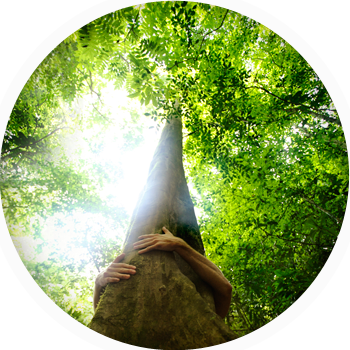At a time when millions of kids are prescribed mind-interrupting pharmaceuticals, over-scheduled with activities, and bubble-wrapped to protect them from life’s hard edges, it turns out there’s one thing kids need more than anything else: time outdoors.
As in, unstructured, unsupervised time to tromp through meadows, explore forests and creeks, prowl coastlines, and roll in the grass. Common sense has been trying to tell us this for years, and now research is confirming it: Mother Nature is a kid’s best medicine.
Alas, today’s younger generations – along with their parents – are headed in the opposite direction. Firmly planted indoors, hermetically sealed-off from the outside world, eyes glued to blue screens instead of blue skies. If kids are on the move at all, it’s almost always inside an automobile being whisked from one adult-structured and sanctioned activity to the next.
You already know the result: epidemic rates of anxiety, depression, and apathy that now are beginning to carry over into young adulthood.
Teach Your Kids to Hug a Tree
In perhaps the largest study to date on the relationship between access to green spaces and the mental wellbeing of children, Dutch researchers from Aarhus University combined the geographical footprint of satellite imagery and mental disease diagnoses within that same area, to contrast kids’ proximity to green spaces and their risk of developing one of 16 mental disorders later in life.
In other words, they compared the mental wellbeing of kids with easy access to nature, and kids without. The study, which ran from 1985 to 2013 and covered roughly one million Danes, demonstrated that kids who were surrounded by large amounts of green space had a 55% lower risk of developing a mental disorder.
“If we were talking about a new medicine that had this kind of effect the buzz would be huge,” said Kelly Lambert, a neuroscientist at the University of Richmond. “These results suggest that being able to go for a walk in the park as a kid is just as impactful.”
Child development and mental health experts were not surprised by the results of the Danish study. For years now, researchers have shown the myriad ill effects that air and noise pollution and the absence of green spaces have on the psyches of all people, including kids.
Similarly, research has demonstrated that communities that place a premium on green spaces usually enjoy stronger social ties along with populations more likely to be physically active (which brings with it boosts in cognitive development).
“There is increasing evidence that the natural environment plays a larger role for mental health than previously thought,” said Kristine Engemann, a postdoc at Aarhus’s Department of Bioscience and study leader. “Our study is important in giving us a better understanding of its importance across the broader population.”
The Blue Screen Blues
It’s not surprising that summer camp counselors consistently report how happy their campers become when they leave their digital devices behind and immerse themselves in camp activities. In a recent interview with Kelly Carman, camp director for Girl Scouts of the Sierra Nevada, Carman reported without their devices, “kids become more present, more ‘there.’ We see a strong correlation between kids being outdoors and kids’ happiness,” she said.
Meanwhile, we’re seeing more and more evidence that kids are struggling with anxiety and depression, thanks to nearly endless access to digital devices. Matrix-like, these kids are plugged in 24 hours a day and are showing the results.
What’s a parent to do? Lead by example. Get your kids outdoors, biking, hiking, canoeing, camping, gardening. Anything that gets kids outdoors, breathing fresh air, feeling the sun on their faces, seeing trees and flowers. The verdict is in: Mother Nature is good medicine for kids.
